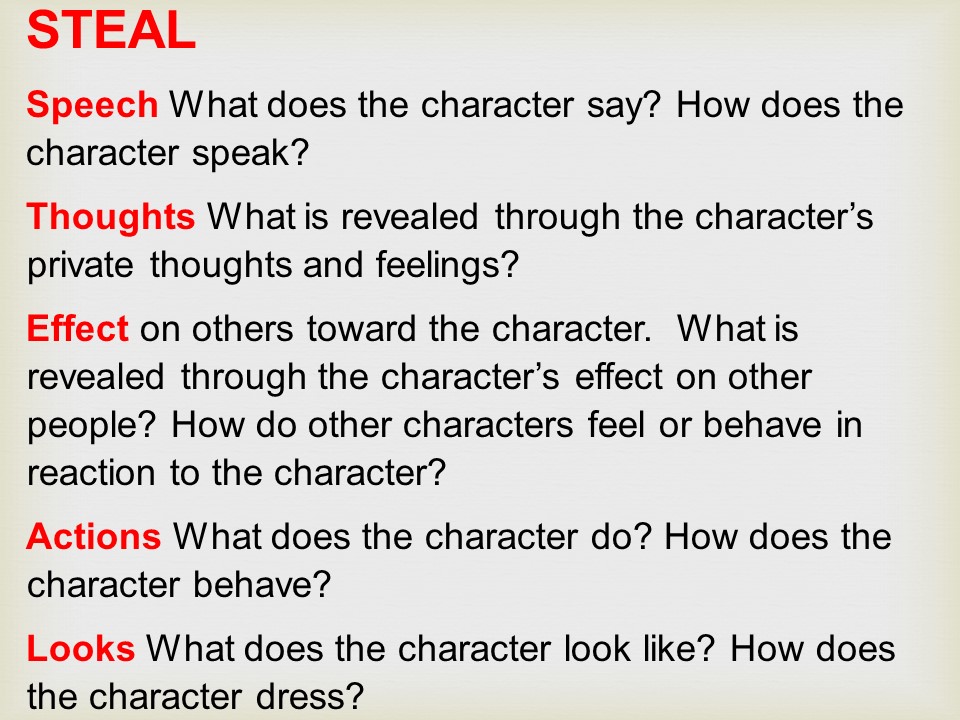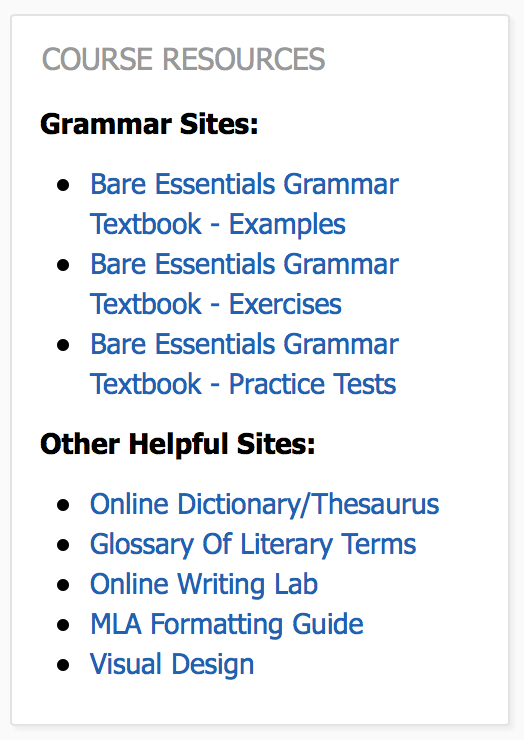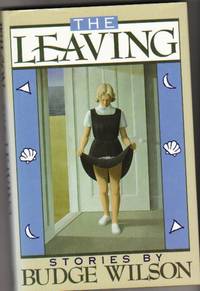Personal and Cultural Identity
| Site: | Cowichan Valley School District - Moodle |
| Course: | ELA10 - Composition (2 credit), CSS, Melnyk |
| Book: | Personal and Cultural Identity |
| Printed by: | Guest user |
| Date: | Wednesday, 17 December 2025, 6:54 AM |
Introduction
Discovering and developing our personal and cultural identity means we need to recognize...
- Relationships and cultural contexts
- Personal values and choice
- Personal strengths and abilities
Consider all of these elements as you work through the assignments in this section.
Summary Explanation of Assignments
Here is a quick overview of the assignments for this unit. However, be sure you read over the specific assignment instructions that follow for each one. Review the marking rubrics for the assignments before you start.
ASSIGNMENT 1: Mirror Writing: Who Am I?
Consider your own character traits by writing a self-character sketch.
ASSIGNMENT 2: Character Development
Read excerpts from several sources that highlight memorable characters and identify how they are developed.
ASSIGNMENT 3: Grow A Character
Write three short paragraphs to practice developing a character of your own.
ASSIGNMENT 4: The Trickster Archetype
Learn about the Trickster Archetype in Aboriginal Stories.
ASSIGNMENT 5: Editing FORUM: Bring a Character to Life
Edit a boring passage to bring a character to life.
ASSIGNMENT 6: PROJECT - Bring a Character to Life
Write a literary analysis essay to examine a character.
ASSIGNMENT 1: Mirror Writing: Who Am I?
|
Learning Target (Curricular Competencies):
|
Task:
In 2-3 paragraphs, write about yourself using one of the following formats:
- Mirror writing. Sit in front of a mirror and examine your self closely. If you just met this person in the mirror for the first time, what would be your first impression? What physical features stand out about this person? Now imagine that you have intimate knowledge of this person; that is, you know this person's 'true self.' Are there features of the person's physical appearance that are consistent or inconsistent with his/her true self? Spend some time describing this person's true self. Keep looking back into the mirror as you write your sketch.
- Setting yourself up for a blind date. Your friend (real or imaginary), who knows you very well and who knows your most intimate thoughts, needs to describe you to a person for a blind date. Your potential dating partner really wants to know what "type" of person you are before agreeing to go on a date with you. What do you look like? What kind of family did you grow up in? What are your interests, hobbies, and values? What is your personality like? What are your dreams and aspirations? What are your quirks or atypical features, if any? These are the sorts of things your friend needs to describe about you.
- Write yourself as a character in a story. Write as if you are a character in a story. Use third-person point of view. Write a simple scene where the character has something happen. Describe how they look, their background and have the character act in a certain way as you would.
Assessment: Below you will find the exemplary criteria used to assess the assignment.
Learning Target: Exemplary (6/6): Exemplary comprehension of the task and clear accomplishment of the objective. Character has been skillfully developed using specific details (looks, background and traits).
Written Expression: Exemplary (6/6): Sentence structure and vocabulary are varied, skillfully written, and carefully chosen. Work has been proofread and there are few or no errors in spelling, capitalization, punctuation, and grammar. Content contributes to the central idea and makes insightful connections with logical organization.
Submission
Use the "3.1 Mirror Writing: Who Am I?" link on the main page of this section of the course to upload your assignment to your teacher for marking.
ASSIGNMENT 2: Character Development
|
Learning Target (Curricular Competencies):
|
A memorable character is one that we as readers can relate to. The more we know about their background, their personality traits, and their looks, the better we can identify and understand their journey.
- Direct Characterization tells the audience what the personality of the character is. For example: “The patient boy and quiet girl were both well-mannered and did not disobey their mother.” The author is directly telling the audience the personality of these two children. The boy is “patient” and the girl is “quiet.”
- Indirect Characterization shows things that reveal the personality of a character. There are five different methods of indirect characterization…

Task: Download "3.2 Character Development" where you will read excerpts from several different pieces,decide which method of characterization is used and explain.
Assessment: Below you will find the exemplary criteria used to assess the assignment.
Learning Target: Exemplary (6/6): Exemplary comprehension of the task and clear accomplishment of the objective. Students clearly demonstrates understanding of characterization methods.
Written Expression: Exemplary (6/6): Sentence structure and vocabulary are varied, skillfully written, and carefully chosen. Work has been proofread and there are few or no errors in spelling, capitalization, punctuation, and grammar. Content contributes to the central idea and makes insightful connections with logical organization.
Submission
Use the "3.2 Character Development" link on the main page of this section of the course to upload your assignment to your teacher for marking.
ASSIGNMENT 3: Grow A Character
|
Learning Target (Curricular Competencies):
|
Task: Using several methods of characterization discussed in the previous lesson, write a one page scene about a brief encounter with a character (may be completely fictional or based on a real event or character). Open with a quick description of the situation in general and then you might include the following:
1. Description of a place (work, home etc.) where they belong to reveal something about them.
2. A description of what they look like. But show they are old by the way they move rather than tell.
3. Dialogue which can reveal personality or background
4. In your interaction have some vivid actions (or not if they are on their deathbed!)
Tips: Think first about the main idea or emotion you want the reader to have about this character.
Before writing, brainstorm some ideas about your character. You might want to use these sites to help:
Character File Questionnaire
Physical Traits Thesaurus
11 Secrets To Writing Effective Character Description
Example:
Eudora Welty’s Sketch of Miss Duling
Miss Duling dressed as plainly as a Pilgrim on a Thanksgiving poster we made in the schoolroom, in a longish black-and-white checked gingham dress, a bright thick wool sweater the red of a railroad lantern--she'd knitted it herself--black stockings and her narrow elegant feet in black hightop shoes with heels you could hear coming, rhythmical as a parade drum down the hall. Her silky black curly hair was drawn back out of curl, fastened by high combs, and knotted behind. She carried her spectacles on a gold chain hung around her neck. Her gaze was in general sweeping, then suddenly at the point of concentration upon you. With a swing of her bell that took her whole right arm and shoulder, she rang it, militant and impartial, from the head of the front steps of when it was time for us all to line up, girls on one side, boys on the other. We were to march past her into the school building, while the fourth-grader she nabbed played time on the piano, mostly to a tune we could have skipped to, but we didn't skip into .
Assessment: Below you will find the exemplary criteria used to assess the assignment.
Learning Target: Exemplary (6/6): Exemplary comprehension of the task and clear accomplishment of the objective. An overall image and/or emotion is created in the scene while revealing several character traits.
Written Expression: Exemplary (6/6): Sentence structure and vocabulary are varied, skillfully written, and carefully chosen. Work has been proofread and there are few or no errors in spelling, capitalization, punctuation, and grammar.
Submission
Use the "3.3 Grow A Character" link on the main page of this section of the course to upload your assignment to your teacher for marking.
ASSIGNMENT 4: The Trickster Archetype
|
Learning Target (Curricular Competencies):
|
Carl Jung first applied the term archetype to literature. He recognized that there were universal patterns in all stories and mythologies regardless of culture or historical period and hypothesized that part of the human mind contained a collective unconscious shared by all members of the human species, a sort of universal, primal memory. Recognizing archetypal patterns in literature brings patterns we all unconsciously respond to in similar ways to a conscious level. Source Return of the Trickster
Storytelling has always been a communal activity for First Nations. Traditionally, stories and legends brought people together to pass on their history to the next generation, to entertain each other, and to teach their children. They told stories about their ancestors, about every aspect of the land around them and about the magnificent beings who were part of their mythology.
One of the central figures in First Nations' mythologies is a character often referred to as the "Trickster". The Trickster can be either male or female. It is called different names in different First Nations' cultures — Raven by the people of the West Coast, Wee-sak-ee-chak by the Cree, Nana'b'oozoo by the Ojibway of the Eastern Woodlands, Kluskap by the Mi'kmaq. The Trickster is known as Coyote, Hare, Crow, Badger or Old Man among other First Nations in North America.
Generally, the Trickster is a half-human and half-spirit figure who roams from one adventure to another, assuming the form of animals or humans of either gender. The Trickster is an amusing character whose enormous curiosity frequently leads to trouble. The Trickster regularly displays contradictory behaviour such as charm and cunning, honesty and deception, kindness and mean tricks. It is unpredictable — one minute a hero, the next a foolish clown.
Above all, the Trickster is a teacher. Listeners are invited to draw their own conclusions about traditions and proper behaviour from the Trickster's exploits. The Trickster is a remarkably self-important individual. Like all humans, the Trickster is imperfect: it is capable of violence, deception and cruelty. Listeners learn as much through the Trickster's mistakes as through its virtues.
There are those who say that the Trickster left the First Nations when the Europeans arrived. Among the Ojibway, it is said that Nana'b'oozoo paddled away from his people in a canoe, accompanied only by his grandmother, upset that his people had rejected him for the ways of the newcomers. But it is also said that Nana'b'oozoo would return when the people were ready to welcome him again. Given the number of contemporary First Nations authors who employ the Trickster in their works, it appears that the Trickster has returned and is roaming the Canadian landscape once again.
One example of an archetype is The Trickster. There are many compilations of First Nations' myths and legends that feature the Trickster. Early translators of First Nations' myths and legends tended to modify the stories to resemble European fairy tales, with a linear plot and a moral. Contemporary versions of the Trickster stories better reflect the complexity and humour of the original storytellers.

Artist: Ron Stacy, Summerland,B.C. "I Shall Take These Stones"~Acrylic on Canvas
Tasks:
1. Read "The Shivering Tree" by John McLeod. Source
2. During or after your reading, open a word document title it 3.4 The Trickster Archetype, copy and paste the questions below and then answer them.
The Shivering Tree
John McLeod
- The Shivering Tree is a modern retelling of a trickster tale that reflects the oral tradition of Aboriginal mythology. The story offers an explanation of two natural phenomena. What are these natural phenomena?
- Based on this story, how would you describe the Trickster figure in Aboriginal mythology?
- What moral lesson can be drawn from the story? How is the story a cautionary tale?
- From what point of view is the story told? How does this contribute to the effectiveness of an oral story?
Assessment: Below you will find the exemplary criteria used to assess the assignment.
Learning Target: Exemplary (6/6): Exemplary comprehension of the task and clear accomplishment of the objective. Answers show an excellent understanding of the reading.
Written Expression: Exemplary (6/6): Sentence structure and vocabulary are varied, skillfully written, and carefully chosen. Work has been proofread and there are few or no errors in spelling, capitalization, punctuation, and grammar. Answers are detailed and include examples where required.
Submission
Use the "3.4 The Trickster Archetype" link on the main page of this section of the course to upload your assignment to your teacher for marking.
ASSIGNMENT 5: Editing Forum: "Bring A Character to Life"
|
Learning Target (Curricular Competencies):
|
Task:
Go through the 3 Grammar Resources listed under Course Resources (on the side of the course). These sites are from an online Grammar textbook called The Bare Essentials. There are examples, practice exercises, and practice tests.

Do the practice tests in UNIT 2 (SENTENCES) and UNIT 3 (GRAMMAR). If you are not achieving 100% on these tests, review the lesson in the EXAMPLES and the do some practice EXERCISES to review.
In this forum, comment on which of the tests/concepts you found easiest. Which one was most difficult? Was there a concept in these practice tests that was unfamiliar to you? How might you begin to apply these learning lessons into your own writing? Can you see where you might use some of these conventions of language? Provide a discussion of your results and their applications into your speaking and writing. Comment on another's post. Did you get other ideas for applying these grammar lessons into your own writing?
There are TWO activities in a FORUM:
- Go to the main page of the course and click on 3.5 Response Forum. Start a new discussion topic by clicking on Add a New Discussion Topic.
- Reply/Respond to someone else's discussion topic by clicking on their topic and selecting Reply. Your response should provide an analysis of the discussion in the post and some original ideas. Try using the following prompts to guide your response to another post. "I wonder…" "I know…" "I can…" Don't just agree or disagree.
Assessment: Below you will find the exemplary criteria used to assess the assignment.
Learning Target: (Exemplary 6/6): Exemplary comprehension of the task and clear accomplishment of the objective. Student has carefully considered prior and new knowledge of sentence construction including run on sentences, sentence fragments, modifiers, and parallel structure. Student has carefully considered prior and new knowledge of grammar rules including use of verbs and pronouns. Student demonstrates clear understanding of personal learning.
Response/Reply: Exemplary (6/6): The response/reply is thoughtful, insightful and respectfully exchanges ideas and viewpoints. Student demonstrates an exceptional level of understanding and communication of shared information.
Submission:
Use the "3.5 Response Forum" link on the main page of this section of the course to post your forum response to your teacher for marking.
ASSIGNMENT 6: PROJECT: Character Analysis Essay
|
Learning Target (Curricular Competencies):
|
By analyzing memorable characters in literature we can learn something about human nature and ourselves. Consider the characters in "Lysandra's Poem," for example, where adolescence repeats itself.

Task: Write a literary analysis essay to examine a character.
1. Read "Lysandra's Poem" by Budge Wilson.
2. Open the assignment 3.6 Character Analysis Essay and follow the instructions carefully to write your essay. You may want to print the story and highlight passages you want to use.
Assessment: Below you will find the exemplary criteria used to assess the assignment.
Learning Target: Exemplary (6/6): Exemplary comprehension of the task and clear accomplishment of the objective. A character trait is clearly identified in a well-written thesis statement and supported with examples and quotes from the story.
Ideas and Content: Exemplary (6/6): Content contributes to the central idea and makes insightful connections following logical organization. Ideas generated are thoughtful and unique. Exemplary development of literary response. Content is clear, concise and true. Accomplishes the purpose with originality, individuality, maturity, and sophistication.
Organization: Exemplary (6/6): The essay is expertly organized in a five paragraph essay, including a well-written introduction, three supporting paragraphs and a strong conclusion.
Written Expression: Exemplary (6/6): Sentence structure and vocabulary are varied, skillfully written, and carefully chosen. Work has been proofread and there are few or no errors in spelling, capitalization, punctuation, and grammar.
Submission
Use the "3.6 PROJECT - Character Analysis Essay" link on the main page of this section of the course to upload your assignment to your teacher for marking.